TECH TRANSFORMERS
10 OF THE TOP RETAILERS LEADING
THE CHARGE ON DIGITAL CHANGE

At a glance
In today’s changeable retail landscape, tech investments are under more scrutiny than ever.
Cost pressures, a changing post-Budget inflationary environment, international tariffs, ongoing geopolitical issues and mounting competition are all forcing retailers to search for the solutions and services set to give the biggest bang for their buck.
And all this while attempting to improve efficiencies, drive profitability and maintain or strengthen impeccable customer service.
So how can retailers get tech investment right? What should they be prioritising? And what pitfalls must they avoid to see real returns?
This insightful new Retail Week report, produced in partnership with Wipro, will answer these questions and more, examining what successful digital change looks like in retail.
Drawing on 10 case studies from across the market, we look at the defining features of exemplary digital change programmes. Read on to discover:
- The importance of linking tech investments to business objectives, and how retailers are generating return on investment
- Whether to keep it in house or to outsource and what questions to ask when picking a partner
- The cultural piece – exploring whether boards are equipped to lead digital transformation, how to navigate leadership structures and how to create buy-in from teams along the way
- How to set businesses up for success – from training to upgrading legacy tech to having the right cybersecurity in place
Driving meaningful
digital change

All retail sectors are now doubling down on the importance of technology to drive meaningful change.
Retailers such as John Lewis Partnership (JLP) and Currys are diving into long-term strategic partnerships with the tech big guns – Google and Microsoft, respectively – as they look to bolster new advances in tech and innovation.
Other retailers, including THG, The Very Group and Next, are building on their own technological prowess to create bespoke tech stacks. This infrastructure can help them meet their own ambitions while acting as an additional revenue stream when sold to third parties looking to invest.
Whether keeping innovation in house or partnering with third parties, retailers are looking to technology to navigate today’s changeable retail landscape and derive the greatest financial returns.
There are two main challenges retailers are using tech to counter: sales pressures and changing consumer demands.
Struggle for sales
Retail sales volumes rose by 0.7% in 2024, following a fall of 2.9% in 2023 and 4.1% in 2022, according to the Office for National Statistics (ONS). Although this marked the first rise in three years, sales volumes have not returned to 2022 levels.
The British Retail Consortium said in January that it expects sales growth to average 1.2% in 2025, below the projected shop price inflation of 1.8%, which means volumes are set to fall amid a growing regulatory and tax burden on retailers.
IMRG, which tracks the ecommerce performance of more than 200 UK retailers and brands of different sizes across multiple categories, equally predicts a slight uptick of 1% growth year on year for 2025, owing to consecutive growth in the four months from September to December 2024.
GfK’s Consumer Confidence Barometer does not suggest radical improvement any time soon either. January’s measurement highlighted a particularly steep fall in consumer sentiment in the wider UK economy and while the subsequent months have seen the overall index score creep up, two points in February and a further point in March, to -19, it is only marginal improvement and still below the long-term average of -10.
The Bank of England reducing inflation to 4.5% in February 2025 is likely to provide some respite
These figures all point to an environment where it is only getting harder to convince shoppers to part with their cash. And considering the raft of job cuts announced by grocers such as Sainsbury’s (3,000), Tesco (400) and Morrisons (200) in January, it is clear that even the biggest retailers are battling to find the most efficient operating models.
The Bank of England reducing inflation to 4.5% in February 2025, down from 4.75% – the lowest level since June 2023 – is likely to provide some respite, especially as this rate was maintained in March. While the bank stated that the UK is “only narrowly avoiding a recession”, the reduction should provide retailers and brands with some financial easing to prioritise tech investment.
Over the coming months, UK retailers will also feel the consequences of US trade tariffs, which increased in April to the highest figure in more than a century. British retailers with a high percentage of sales coming from the US are most set to feel the pinch directly, including the luxury market, which is already wading through subdued sales in the market slowdown.

27% of total retail sales were made online in 2024 (Image: Getty Images/E+/Gorica Poturak)
27% of total retail sales were made online in 2024 (Image: Getty Images/E+/Gorica Poturak)
Different demands
It is not just the overall economic environment prompting retailers to think differently about their tech investment.
While it’s true that consumers are still cost-conscious (only 8% are increasing their spending, according to recent research by Retail Week and Vypr), they also want different things from the retailers they interact with than they did even five years ago.
Online penetration also continues to tick up – 27% of total retail sales were made online in 2024, according to the ONS, up from 19% in 2019. A Retail Week survey of 43 retail leaders between June and July 2024 found that, on average, they expect online sales to represent 4% more of total sales in three years’ time than they do today.
A Retail Week and nShift poll of more than 1,000 UK shoppers in March 2024 found that nearly half (47%) now browse retail websites as their first choice for shopping inspiration. The progression of ecommerce over the last half-decade has increased competition and made shopping ever easier, with traditional retailers realising they need to do more to compete.
To offer this array of new services, be it click-and-collect, tech-enabled interactions in the aisles or more personalised online communications, retailers must invest from back to front
Doing more could include creating more seamless and compelling experiences in store, putting new connected devices into the hands of staff to serve shoppers more intelligently or building more sophisticated databases behind the scenes to understand shopper behaviour. Tech transformation hasn’t been optional, but rather necessary, to succeed.
To offer this array of new services, be it click-and-collect, tech-enabled interactions in the aisles or more personalised online communications, retailers must invest from back to front. This involves ripping up old systems and, typically, will mean a switch from on-premise servers to cloud storage systems as extra computing power is needed.
Robust and secure systems and IT architecture are required for modern retail – and even more so as advances in artificial intelligence (AI) continue at pace to provide more opportunities for retailers to run efficiently. Retail Week’s survey of 43 leaders found that 87% are using AI in some way to improve business function.
Read on as we highlight the retailers selected by Retail Week’s panel of journalists and analysts as the leading tech transformers in the UK, along with an exploration of their winning strategies.
Retail’s top 10 UK
tech transformers

Each of the top 10 is taking on tech transformation in its own unique way. However, there are commonalities between each retailer’s processes and focus areas, such as a willingness to embrace cultural change and bring their staff on the journey with them.
Typically, these retail tech leaders understand that customer-facing success and sustainable growth can only come with back-end and infrastructure investment first. And, as you will see, that very often involves embracing a whole new way of working. Click on each retailer to go straight to their profile or keep scrolling to read them all.
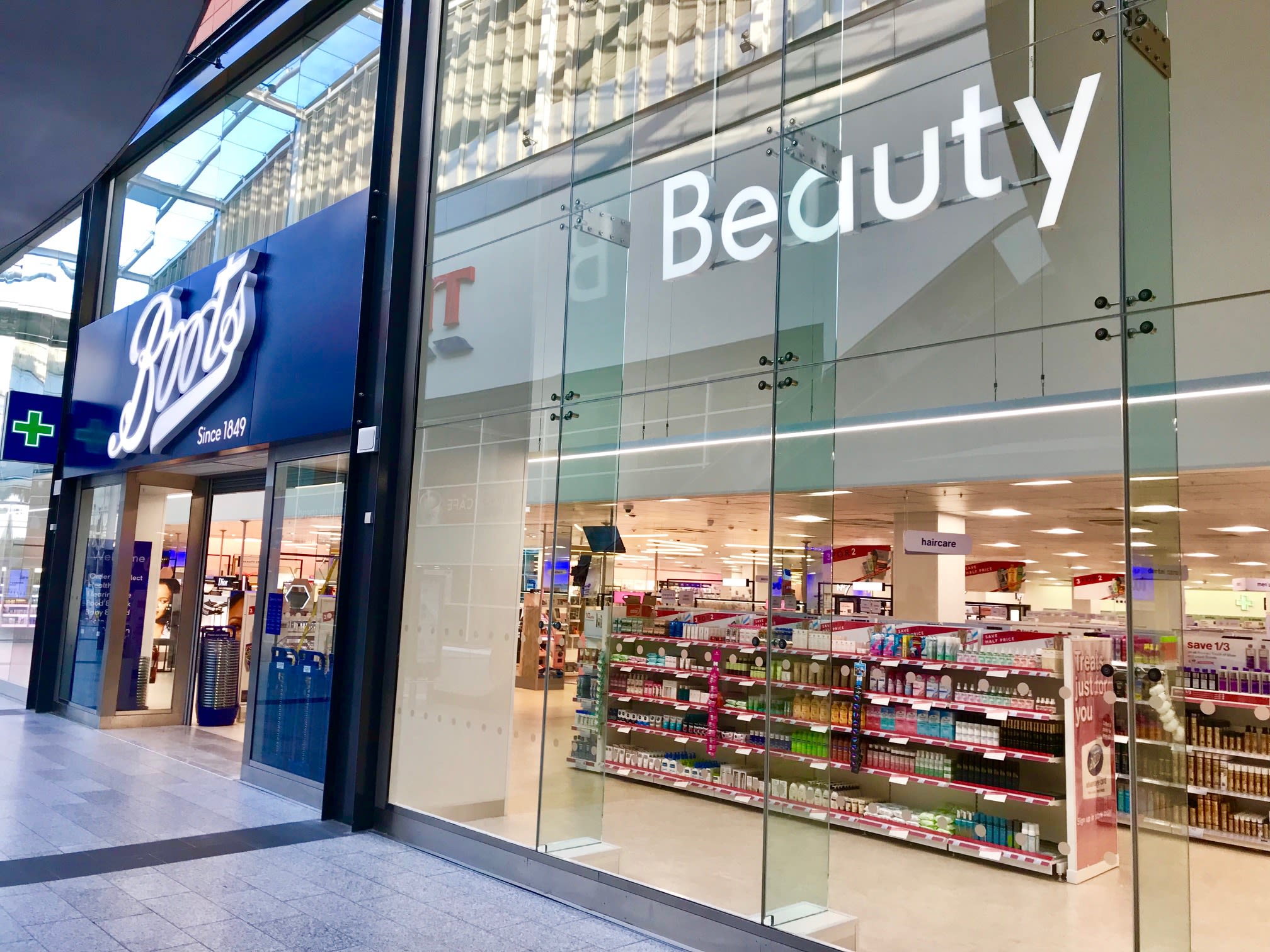
Boots
Boots appointed former Asda and KPMG UK executive Preyash Thakrar as its strategy and transformation director in March 2024 – a clear indication of the importance it attaches to tech-enabled change.
Thakrar leads the health and beauty retailer’s strategy, property and business tech transformation teams. Upon his arrival last year, he talked up “a significant period of change for the Boots business and the industry as a whole”.
So, what has Boots been working on from a digital transformation perspective? According to its chief digital officer Paula Bobbett, the business is already using AI to remove manual work from colleagues “to allow them to do more value-added tasks” – including in its Staffordshire warehouse, where a fleet of robots remove the need for pickers to do so much carrying.
In forecasting, she says, up-to-date information about the weather feeds into predicted sales. The retailer is also trialling a ChatGPT-based chatbot that can answer customers’ conversational questions.
“We are relentlessly focused on our transformation journey and have more exciting plans ahead to further enhance the experience for our customers”
Boots also leverages its vast store estate to support digital strategy, integrating partner platforms such as quick commerce players to offer customers on-demand delivery services direct from its shops. Just Eat was the most recent addition to the network here, in September 2024.
Underpinning the Boots tech-led transformation is a strategic partnership with Microsoft, which began in January 2019 and has involved a migration of the wider Walgreens Boots Alliance IT infrastructure onto Microsoft Azure.
Colleagues in head office and stores use Microsoft 365 to drive productivity, security and internal collaboration. And, based on new managing director Anthony Hemmerdinger’s comments in January, there’s no sign of this transformation slowing down soon.
“We are relentlessly focused on our transformation journey and have more exciting plans ahead to further enhance the experience for our customers,” he explained as part of Boots Christmas trading announcement, which showed sales rose 8.1% year on year in the three months to November 30, 2024, with digital sales up 23% to account for 22% of total retail sales.
“Looking forward, we face heightened cost pressures in 2025 following the autumn Budget; however, with positive momentum behind us and a clear plan in place, the business is focused on navigating these and continuing to deliver long-term, sustainable growth.”
Sales have continued to rise at Boots in 2025, up 1.6% in the three months to February 28 versus the year before.
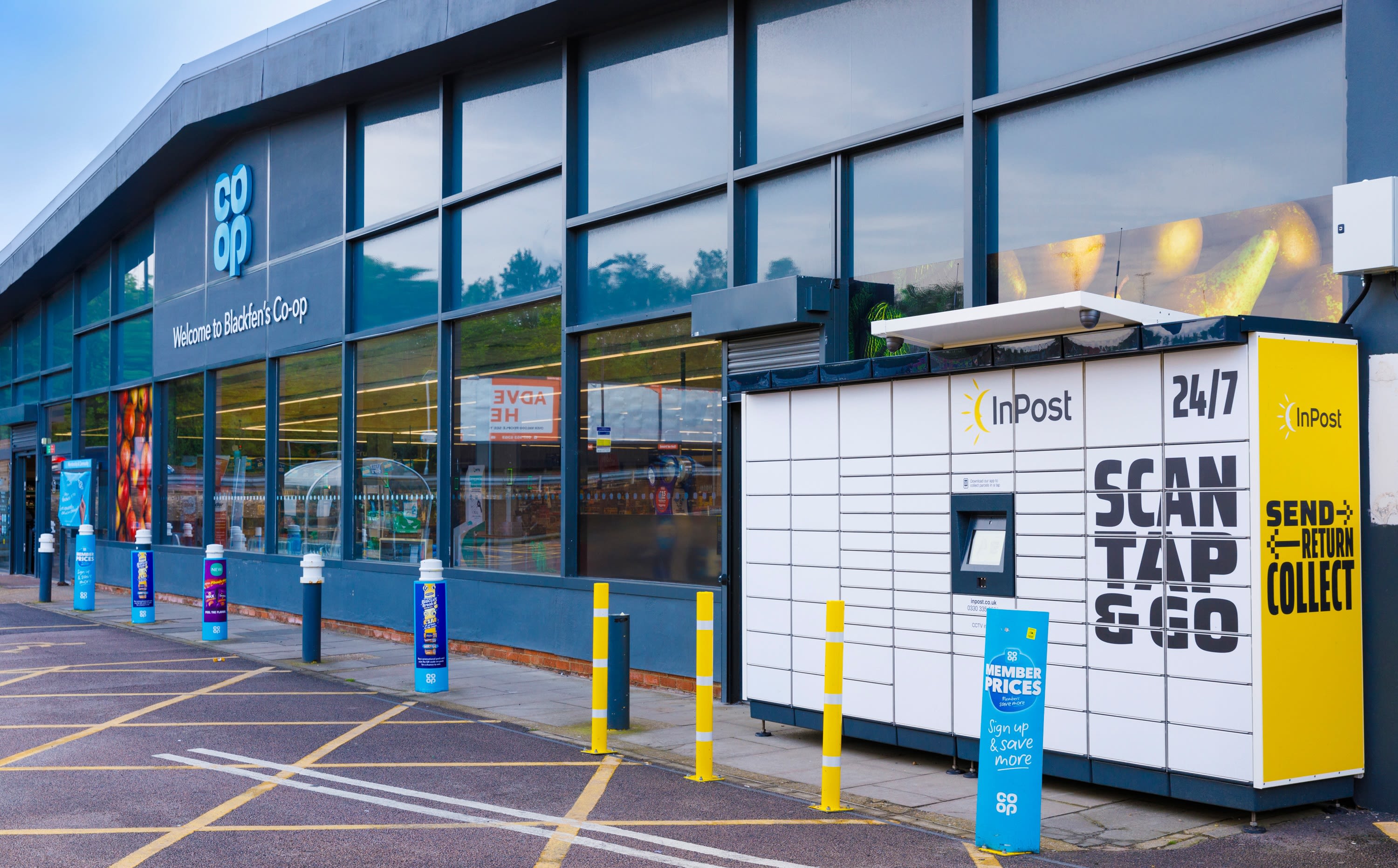
Co-op
A flurry of tech investments over the past 12 months highlights the Co-op’s willingness to embrace continual change.
In July 2024, it announced it would work with Walmart Commerce Technologies to implement its online fulfilment tech, Store Assist. The aim of the tech is to enhance its colleague and customer experience, and support its quick commerce growth ambitions.
The Co-op confirmed in January 2025 that it wants to grow its share of the quick commerce market to over 30%, supported by plans to open 75 new convenience stores this year.
Store Assist digitises and streamlines online order fulfilment workflows, and allows the retailer to manage all online orders in one place, which is vitally important for the Co-op as it grows the number of third-party delivery companies supporting its convenience operations.
Deliveroo, Just Eat, Uber Eats and autonomous robot company Starship Technologies are all existing delivery partners. Last year, InPost lockers were also rolled out in more than 150 Co-op stores for customers to pick up parcel deliveries.
Additionally, in September 2024, the Co-op unveiled a 24-hour service in the city centres of Leeds, London and Manchester, offering online non-stop grocery deliveries to cater for the ‘always on’ consumer. Such a service requires robust tech infrastructure.
“We’re also investing heavily in what the future technology of the stores looks like”
The Co-op has been fixing its tech plumbing for some time, for example by announcing in April 2023 a Microsoft partnership that aims to bring efficiency, sustainability and security gains to the wider group, and which underpins much of its work in the digital space today.
The retailer also announced in June 2024 that it had completed its RISE with SAP migration, viewed as a key part of its digital transformation programme as it looks to standardise business processes, enhance operational efficiency and drive future investment.
Central to the work here is implementing systems that improve product ranging, stock visibility and forecasting across stores. The Co-op will now bring its enterprise resource planning into the cloud and streamline its finance and procurement functions as part of a modernisation of its legacy tech.
Looking ahead, tech sophistication will be required to support the Co-op’s Convenience 2035 project, devised to ensure the retailer best serves its key but contrasting demographics of under-35s in urban areas and over-70s in rural parts of the UK.
Co-op Food managing director Matt Hood says the retailer expects to get better at using data to group stores together so it can best offer customer bases what they want in the future.
“We’re also investing heavily in what the future technology of the stores looks like,” Hood says, which includes trialling tills that can double as both manned and self-serve checkouts and next-generation electronic shelf-edge labelling to help staff pick on-demand deliveries.

Currys
There has been a constant stream of digital modernisation announcements and investments at Currys under chief executive Alex Baldock in the past 12 months, highlighting the electricals retailer’s credentials as a tech transformer.
Baldock leads the tech strategy from the top. In May 2024, he called AI “the biggest technological leap of our lifetime” and predicted “big benefits” for his workforce, customers and shareholders alike from its deployment within the retailer.
His comments came as Currys announced it was working with Microsoft and Accenture to develop core cloud technology infrastructure, aimed at supporting AI-powered initiatives across the business.
Leveraging the joint venture Avanade, Currys is seeking to modernise, secure and simplify its IT systems, and create a route to deploying Microsoft AI technologies such as Azure OpenAI Service to raise the bar in terms of customer and employee experience. That, in time, is expected to materialise in the form of in-store colleagues answering customer queries with the support of AI and allowing consumers to better self-serve online.
Back in August 2023, Currys launched its retail media network Connected Media. It has since built out its offering, allowing brands to target customers with relevant messaging on the retailer’s platforms, fuelled by better organised data.
“We have to make ourselves more cost-efficient, and you can expect to see more automation in our logistics and our supply chain”
Most recently, in January 2025, Currys converted its in-store screens to dynamic media spaces in partnership with in-store media specialist PRN, aiming to drive evidence-based, impactful consumer interactions.
Baldock told Retail Week in January that tax rises for 2025 following the October Budget will likely lead to more automation and offshoring at Currys. He says initiatives such as electronic shelf-edge labelling, which should appear in circa 100 stores by the end of 2025 as an efficiency method, could be ramped up as people costs rise due to government policy.
“We have to make ourselves more cost-efficient, and you can expect to see more automation in our logistics and our supply chain,” he noted.
Any additional tech development this year will build on the considerable work in this field completed in 2024.
A digital queuing system has been in place since November 2024 across its 298 stores, which intends to better manage customer wait-time expectations, and the retailer has made back-of-store improvements to how it handles click-and-collect orders.
This latter move, which includes reducing the time uncollected goods are held in store from 28 to 10 days, is all about ensuring efficiency even as its omnichannel approach creates more operational complexity.

eBay
In a December 2024 interview with Retail Week, eBay’s general manager of global luxury, Mari Corella, underlined the company’s status as a transformer. She described eBay as “not only a retail company, but also a technology company”.
“We’re always refining our algorithms and doing a lot of work with AI, so during a search our algorithms feed items we believe the shopper is looking for and give recommendations on a real model,” she said.
In terms of front-end customer experience, the online marketplace has had a busy last year improving its proposition by introducing a resell-on-eBay tech feature, removing private seller fees and launching a trade-in option for technology.
The resell-on-eBay feature allows users to list their clothing online with “just a few clicks of a button” and is built into Certilogo’s Secure by Design digital ID, which can be accessed by scanning a connected product’s smart label.
“We’re always refining our algorithms and
doing a lot of work with AI”
Indeed, the July 2023 purchase of Certilogo, a provider of AI-powered apparel digital IDs and authentication to help give consumers more protection against counterfeits, is a key element of eBay’s ever-growing focus on security. A raft of acquisitions made in the past three years, including the purchase of AI-based compliance business 3PM Shield in February 2023, are providing the foundation for eBay’s current growth.
There have been multiple additional acquisitions in specialist selling areas of the eBay platform. And kudos should be given to the eBay leadership and senior technologists for integrating each new business while maintaining group revenue growth (up 3.2% to $10.1bn (£8bn) in the year to December 31, 2023).
A gross merchandise value dip of 0.9% to $73.2bn (£58.9bn) in the latest financial year shows that competition is increasing in the online space, though, and underlines the need to continue to transform.
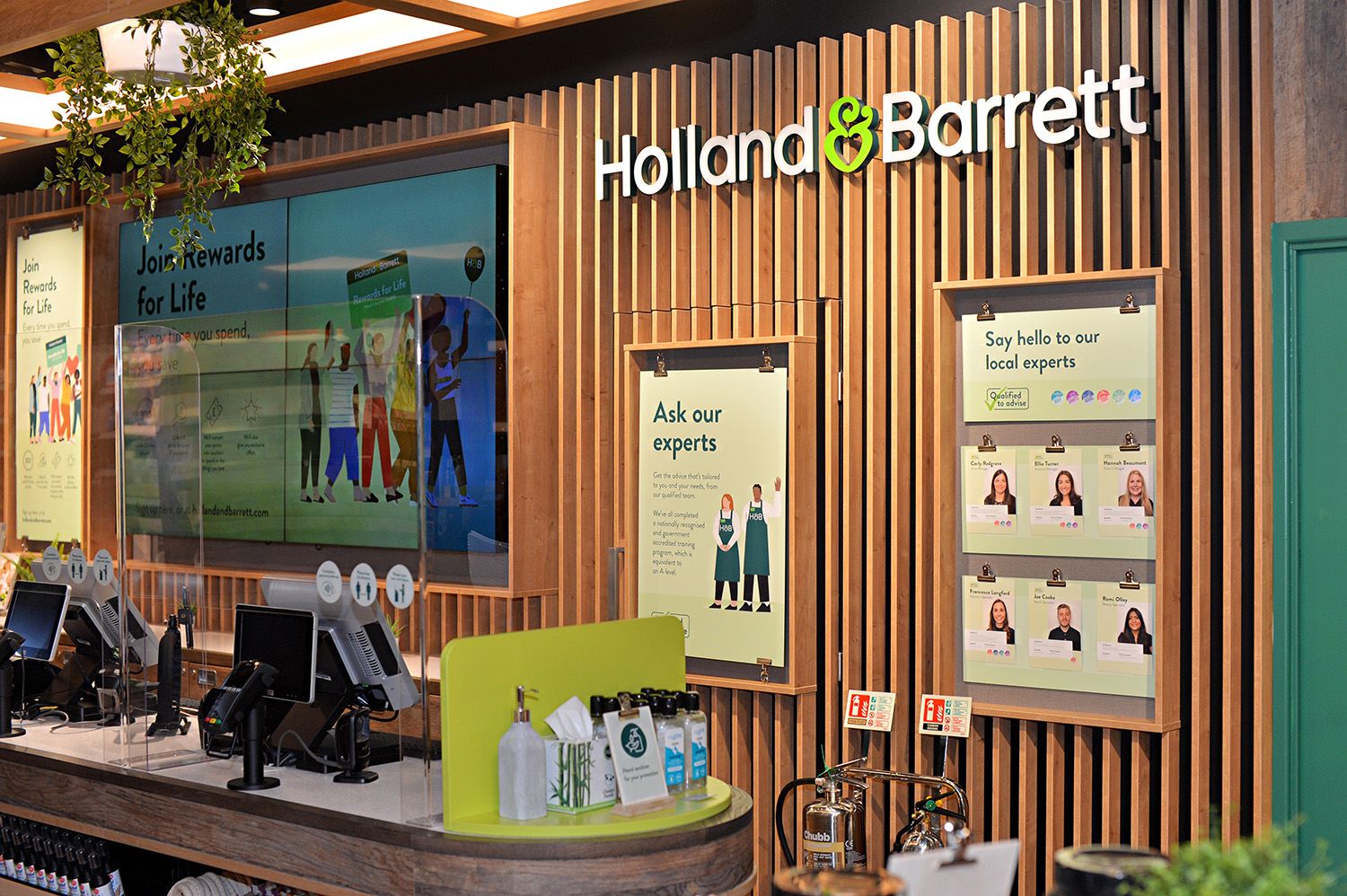
Holland & Barrett
While much of Holland & Barrett’s current transformation strategy revolves around refreshing its store estate, bringing more own-brand products to market and committing investment to become a wellness hub, significant change is also happening behind the scenes.
Much of this is evident in its Cheapside branch in the City of London, for example, which was refreshed in September 2024 as part of an ongoing shop spruce-up. It includes features currently unique to the branch that will be replicated elsewhere, including a self-checkout.
Holland & Barrett is looking to ramp up customer engagement in its stores through the use of technology. The average customer interaction time in Cheapside is 11 minutes, supported by the Cerebro colleague app, which is used by trained staff to provide customer advice and product and lifestyle recommendations.
On the customer-facing side, Holland & Barrett is also investing in its mobile app, H&B&Me, which was launched in July 2024 and allows users to focus on their personal health needs, giving nudges such as recommending more sleep.
There is evidence of the wider, long-term strategy paying off as the retailer ranked seventh in the 2025 UK Customer Satisfaction Index
Much of Holland & Barrett’s technology – such as self-checkout and Cerebro – is self-built, in contrast to those retailers that favour buying from third parties. Chief executive Anthony Houghton says the retailer is proud of its internal technological and digital expertise, but acknowledges there is often a need to work with a partner.
Away from stores, Holland & Barrett’s supply chain is also undergoing a major transformation, with the business now in the second year of a three-year agreement with THG Ingenuity to run its ecommerce fulfilment while its main distribution centre (DC) undergoes development.
In August 2024, the company said it had partnered with Toyota Material Handling UK to bring widespread automation to its DC operations, which includes the AutoStore technology system for picking and warehouse management.
The most recent annual results for Holland & Barrett show rising sales – climbing 11.1% to £806.1m for FY23 – but significant profit dips as a result of these investments. Operating losses widened to £35.9m from £29.9m the year prior.
However, there is evidence of the wider, long-term strategy paying off as the retailer ranked seventh in The Institute of Customer Service’s 2025 UK Customer Satisfaction Index.
Through a fine blend of tech and people power, Holland & Barrett will be looking to continue this momentum in 2025. It is now a year since the business partnered with MRI Software to use its analytics technology, which it deploys to gain accurate footfall analytics to help shape its proposition going forward.

Ikea
Retailers described as transformers tend to be early adopters of AI or companies working on ways for the latest AI advancements to support their organisation and people – and Ikea fits that bill.
Speaking at The Edge Summit in September 2024, Ikea’s chief architect Garima Singh suggested that AI is “enhancing, not replacing” creativity in its retail operations, helping the retailer to improve its customer experience in several ways.
Ikea Kreativ, for example, allows consumers to take a picture of the space they want to style and conduct a complete redesign with the use of an AI-powered digital assistant.
Ikea set the ambition in 2023 to provide AI literacy training to approximately 30,000 workers and 500 leaders across its organisation
Being an early adopter of AI, Singh said the aim has been to find technology that helps provide a consistent service for customers, whether they are shopping online or in store.
Elsewhere, Ikea is using various AI-enabled tools developed by the organisation or jointly with its suppliers. One example of this coming to life is the Hej Copilot, announced in April 2024, which is designed to assist co-workers with tasks ranging from testing and image creation to generating ideas and crafting presentations.
Alongside these clear AI user cases, Ikea continues to take its staff on the innovation ride, having set the ambition in 2023 to provide AI literacy training to approximately 30,000 workers and 500 leaders across its organisation. The business continues to run courses aimed at upskilling its workforce as it finds new ways for this transformative technology to impact the business.
Another area to look out for at Ikea as 2025 progresses is its growth in the resale space. In August, the retailer began trialling a dedicated resale website in Madrid and Oslo, intended to rival Gumtree and eBay, and support its circularity strategy. The plan is to introduce this new way of engaging with consumers to new markets in due course.
And the pace of new tech implemented to support the internal business is not slowing down. In May 2024, Ikea opted to outsource some of its tech expertise and services to a key external partner, Infosys, which is expected to support and expedite the delivery of digital tools and software used by staff to boost operational efficiencies.
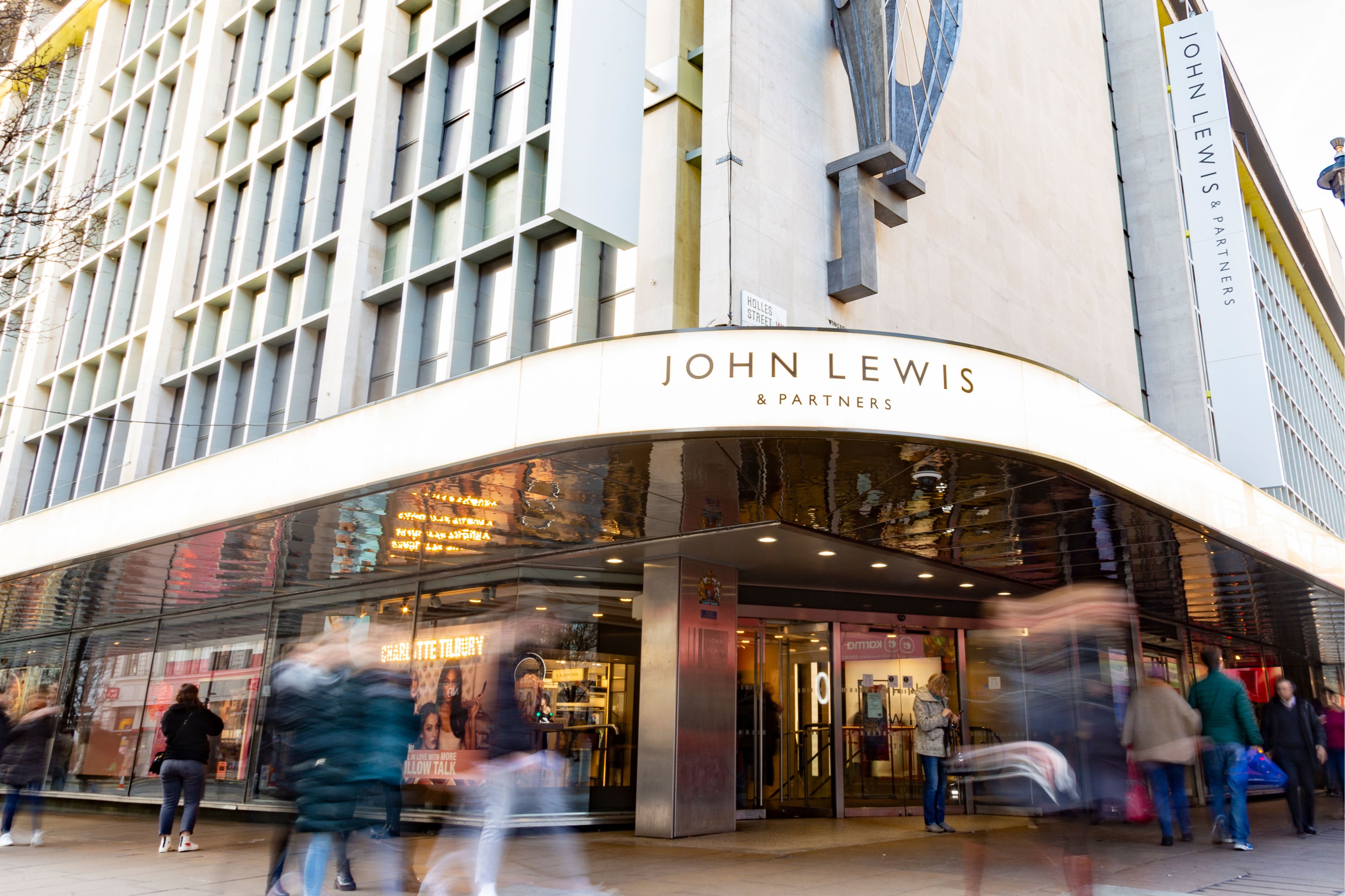
John Lewis Partnership
Tech transformation has supported JLP’s return to sales growth and narrowing losses in 2024 after a challenging period. In March, the group announced sales were up 3% year on year from £12.4bn to £12.8bn. Profit before tax and exceptional items for the 52 weeks to January 25 tripled from £42m to £126m. JLP said it is investing a further £114m into pay as well as up to £600m in business transformation “after careful consideration”.
JLP announced a partnership with Google Cloud in August 2023, worth £100m over five years, as part of its ongoing turnaround. The key aim was to help steer its migration to cloud infrastructure and support its adoption of AI – and the group views this as a tech foundation layer that will allow it to add more services in due course and help it access insights to support the customer experience.
Digital changes at the business include the launch of buy now, pay later on its website in November 2024, which helps customers spread the cost of payments, and – more significantly – a “multimillion-pound” investment in technology and simplification, aimed at improving customer service through better staff task management.
For example, a £5m investment in new digital headsets has been ringfenced to improve communication in stores, reduce waiting times for shoppers and cut the time employees spend looking for each other. Mobile payments will also be added to 5,000 Partner devices to support payments away from the till.
A new customer insights platform was launched in partnership with Dunnhumby, allowing John Lewis, Waitrose and their stocked brands to explore data within 27 predefined insight reports
Dedicated call points are to be installed in shops, in locations such as fitting rooms and collection areas, allowing customers to request help more easily. There will also be a £1m investment in mobile printers so missing shelf-edge labels can be addressed more quickly.
Behind the scenes, a new customer insights platform was launched in partnership with Dunnhumby in October 2024. The platform allows John Lewis, Waitrose and their stocked brands to explore data within 27 predefined insight reports, allowing brands to better understand how they’re trading, as well as data on customer behaviour and shopping habits.
JLP has partnered with Wipro as part of its wider tech strategy, with the aim of transforming IT infrastructure, increasing cloud adoption and reducing risk from legacy technology. The work Wipro is conducting alongside JLP is also expected to decrease the partnership’s carbon footprint, in line with the retailer’s strategy to reach net zero greenhouse gas emissions across its value chain by 2050.
By highlighting how cloud adoption contributes to wider strategic business initiatives, Wipro helped JLP align the most relevant stakeholders and ensure the success of its transformation programme. Wipro leveraged its cloud studio framework to migrate on-premise applications to Google Cloud with minimal business disruption.
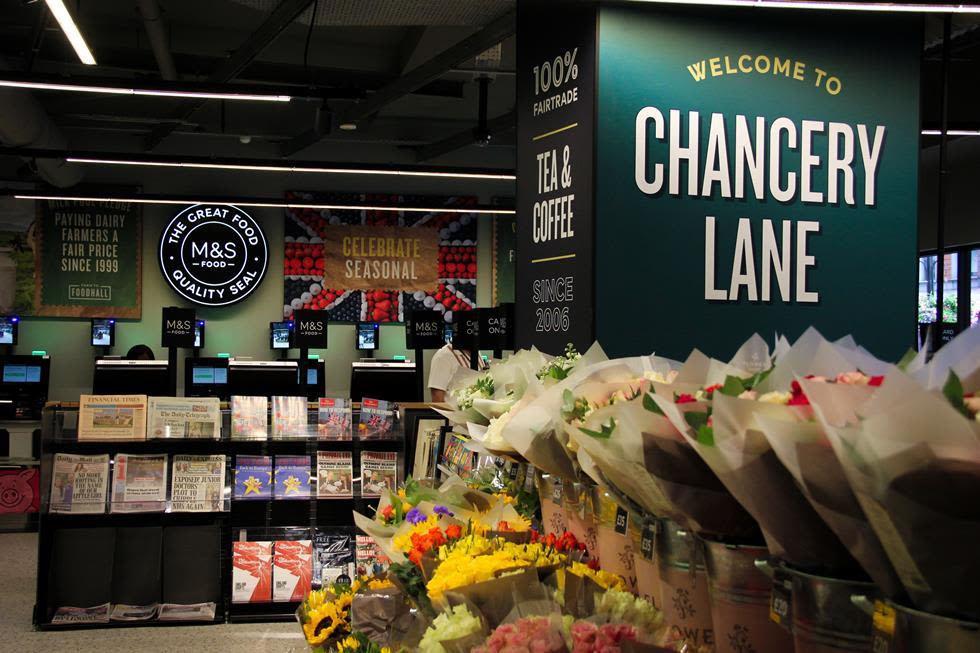
Marks & Spencer
In January 2024, M&S chief executive Stuart Machin spoke of the “importance of digital and technology” to the next phase of M&S’ transformation and, in the year since, there have been several examples of the retailer walking the walk, not just talking the talk.
In September 2024, for example, the business announced it was ramping up its growth strategy with an “accelerated pace of change” across digital, data and tech – with more use of AI being a key part of the plan. Generative AI will be used to write 80% of M&S product descriptions to both list and sell products at a faster speed, it said, as it chases efficiency and productivity across its operations.
Pre-tax profit growth of 41.4% to £672.5m in the 12 months to March 30, 2024, got CEO Stuart Machin talking about “the beginnings of a new M&S”
In May 2024, M&S also announced it had increased investment in core technology infrastructure, including an upgrade in SAP, building on its work with SymphonyAI in September 2023, which involved deploying AI-based technology on handheld devices to compare images of products in stores to shop-specific planograms.
A focus on tech infrastructure and a willingness to modernise, which includes the decision in 2022 to acquire its food logistics operator Gist to take more control of its end-to-end operations, is certainly driving M&S in the right direction.
Pre-tax profit growth of 41.4% to £672.5m in the 12 months to March 30, 2024, got Machin talking about “the beginnings of a new M&S”, by which he meant a retailer that is more efficient than before, one that has a stronger digital infrastructure and one that is more streamlined throughout its supply chain.
More technology investment looks set to come as a result of the Budget in October 2024, with Machin noting in February that he will look at new technologies to save 160,000 man-hours across the supply chain as M&S tightens its focus on costs in a higher-tax environment.

Pets at Home
Pets at Home reduced its profit guidance for the next financial year in a pre-close update for the year ending March 27. The retailer said group underlying profit before tax is expected to be £133m, in line with previous guidance. However, while it expects to outperform the market due to digital investments, it has reduced its underlying profit guidance to be in the range of £115m-£125m.
The retailer cited a “challenging and volatile UK consumer backdrop” but reports that completion of its network optimisation and new digital platform sets it to return to sales and market outperformance the following year.
This backdrop makes it all the more important for Pets at Home to double down on its omnichannel strategy, which is intended to ensure the retailer’s shops become bigger contributors to its online fulfilment network and all its consumer channels are better interconnected.
Since 2020, the pet specialist has been building a single pool of stock across its business, with the support of tech company OneStock, to provide more fulfilment options for its customers. Pets at Home has been continually building this out across its estate so that, as of April 2024, around 40% of ecommerce orders were being picked up by customers in stores.
The tech deployment has enabled the retailer to get to grips with its inventory, which in turn has given it a chance to introduce services such as one-hour click-and-collect.
“In the future, we can use AI for showing you what [a collar or lead] will look like on your dog. The options are honestly limitless”
In October 2024, more tech infrastructure work at Pets at Home was announced, with the retailer teaming up with Microsoft to develop an autonomous AI agent for its profit protection team.
As an early adopter of Microsoft Copilot Studio, which allows a business to create AI agents to support various business areas, Pets at Home is one of the first movers when it comes to generative AI deployment. The hope is that the tech will automate common tasks across the retailer’s operations, giving the Pets at Home team a chance to focus on more strategic, complex tasks for improved productivity and effectiveness.
Examples of the tech in use include the retailer creating an AI agent to help its retail fraud detection team look into suspicious transactions. The team said it had been a “rapid and seamless process” as the agent does not require difficult coding skills to integrate the service into existing systems.
Pets at Home said in November 2024 that the launch of a new digital platform in March 2024 has been beneficial to the business in several ways. The new website and app modernised Pets at Home’s ecommerce offering and allowed it to more easily implement “whatever comes along for the future in terms of technology”.
App revenue almost doubled, due in part to a newfound ability to contact consumers directly on the app, while the retailer says it is utilising store and ecommerce transaction data to serve relevant product recommendations to its customers.
Chief executive Lyssa McGowan said the new digital platform allows the retailer to “unleash” AI and get it in front of customers.
Speaking to Retail Week in May 2024, she noted: “In the future, we can use AI for things such as going online and finding a collar or lead or harness for your dog.
“We can then show you what that will look like on your dog. Not just on a dog that’s a similar height, size or breed, but actually your dog. The options are honestly limitless.”
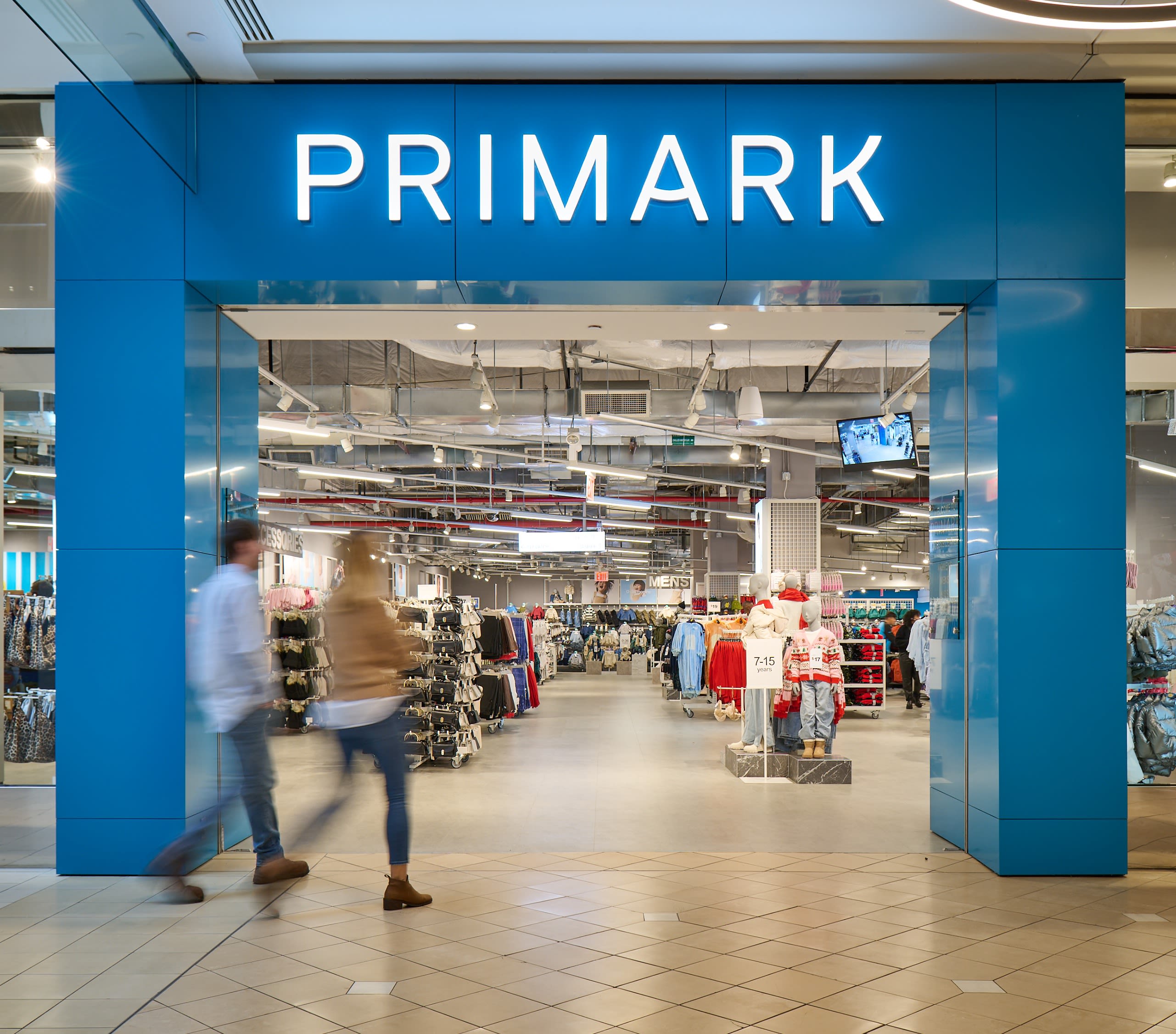
Primark
Primark invested more than £75m in its UK stores in 2024, but as it continues to grow its physical presence globally it hasn’t forgotten the importance of robust IT architecture.
While tech integration with stores has been vital as Primark rolled out click-and-collect capabilities for the first time in November 2022 – available in 113 UK stores as of January 2025 – its dedication to IT goes much further.
Primark has been building an Oracle platform in retail and merchandising with the help of systems integrator Wipro since 2017 to support their aggressive store expansion across 17 countries globally. The Oracle solution aims to increase supply chain efficiencies, optimise pricing and promotional strategies and help build effective omnichannel customer experiences.
The journey with Wipro is still ongoing and is expanding into new areas such as franchise businesses in some global locations.
Primark also extended an existing long-term partnership with Tata Consultancy Services (TCS) in August 2024. This particular arrangement is about driving business-critical integration programmes and stabilising core platforms for the retailer, while also improving cybersecurity capabilities, and boosting the stability and reliability of processes and systems.
Primark has recognised the need to evolve to a more agile and product-based operating model and introduce automation through intelligent development operations technologies.
The digital strategy aims to increase footfall to stores through better understanding its customer data and enabling services such as click-and-collect
Primark is taking its workforce along for the ride, too. In September 2024, it hosted a Data and AI Week event, including Alteryx and Tableau community user sessions and discussions about the importance of data governance, data strategy, generative AI in areas such as ESG reporting and engagement with digital customers.
For Primark, adopting digital – as it has done at pace in the past few years, having been late to ecommerce – is not a case of the business moving away from its physical retail roots. The aim of the Primark digital strategy is to increase footfall to stores through better understanding its customer data and enabling services such as click-and-collect, which can bring in customers they otherwise might not attract.
It’s crucial that Primark does not stand still – and sales in its UK and Ireland division surprisingly dropping by 4% year on year in the 16 weeks to January 4, 2025, provides a clear reminder of the need to keep evolving its proposition in line with consumer expectations.
Obstacles to implementing digital change
and how to overcome them

Retailers must overcome a number of key challenges to clear the way for sustainable tech transformation. While our profiles of the 10 retailers demonstrate significant progress, the mixed sales performance of some highlights that there is no silver bullet and work has to be continuous.
Here we explore the four biggest obstacles to tech transformation and highlight how retailers and brands can make it work despite them.
Next has leveraged its tech stack to third-party brands as an additional revenue stream
Next has leveraged its tech stack to third-party brands as an additional revenue stream
Crew Clothing Company has chosen to work closely with several third-party tech providers (Image: Crew Clothing Company)
Crew Clothing Company has chosen to work closely with several third-party tech providers (Image: Crew Clothing Company)
Notonthehighstreet is undergoing an IT infrastructure revamp
Notonthehighstreet is undergoing an IT infrastructure revamp
Strategic and financial considerations
Tech transformation does not come cheap.
Partnerships can run into the hundreds of millions, much like JLP’s Google AI tie-up, or be a significant drain on a company’s profitability, as evidenced by Holland & Barrett’s latest annual figures. A pre-tax loss at the business widened from £59.6m to £65.3m in the year to September 30, 2023, aligning with a ramp-up in tech investment.
Fashion and homewares retailer Next has leveraged its tech stack as an additional revenue stream. Its Total Platform offers a complete suite of online services to third-party brands, including websites, marketing, warehousing, distribution networks and customer service centres.
While this separation of tech from retail meant Next did not feature among our top 10 transformers, the retailer offers an indication of how the cost of technology investment can rise year on year.
Next reported that its technology spend will increase to £216m this year (2024/25) in its latest financial statement, released January 2024, up from £97m in 2019/20.
It says the reason for this growth in tech spend is the number of opportunities it has identified for new systems to generate additional revenues and cost savings in the long run, as well as a need to modernise all major legacy software applications.
Next is one of the most successful UK businesses of the decade, and it knows investment in a new tech stack and updating systems can pay off, delivering measurable value if aligned with business objectives.
In its 2023/24 annual sales report, the retailer stated that £216m should represent peak tech spend, with an aim to “spend less but deliver more new functionality”, partly because the modernisation means its software is now easier to develop, test and maintain.
As retailers weigh up the financial outlay, inevitably the question arises around whether to outsource the building of their tech stack to third-party vendors or develop the tools in house.
Holland & Barrett favours the build rather than buy option, as highlighted in its profile, while retailers such as Crew Clothing Company prefer to work closely with several tech providers.
Most recently, in June 2024, Crew Clothing partnered with cloud management solutions company Cegid to simplify its tech stack, creating one task management and retail operations platform. The retailer also works with PMC for point-of-sale solutions, Retail247 for stock management and product information management, and Workday for finance, explained Richard Surman, head of IT, in February 2024.
Surman’s choice to diversify systems is aimed at preventing large-scale problems when things go wrong – such as outages and bugs – which then only affect a smaller percentage of the business in isolation.
Another example is online marketplace Notonthehighstreet, which is undergoing its own IT infrastructure revamp under the leadership of vice president of technology Dan Lake. Lake said he is keen to use third-party tech providers where possible, seeing the efficiency gains in using commoditised tech rather than solely building in house as had been done prior to his arrival.
Notonthehighstreet began its migration of promotional capabilities to a third-party engine platform, Talon One, in December 2024, to support the running of campaigns and the building of its loyalty proposition. The retailer showcases around 450,000 products on the platform, which makes surfacing the right products to the right consumers an ongoing challenge.
Search and discovery has been enhanced using Google Vertex AI since 2023, with Valtech reporting a 10% increase in search conversion rates year on year when the AI tool went live for all Notonthehighstreet users.
Creating a culture ready for change
Technology alone doesn’t drive transformation; people do. And it’s no surprise to see the top 10 transformers either recruiting specific job titles to look after strategic tech- and data-led transformation – for example, at JLP and Boots – or having their CEOs drive the agenda, as is the case at Currys and M&S.
Other retailers seeking tech transformation need to consider whether their boards are actually equipped to lead the change. Those that will succeed know how to navigate leadership structures and create buy-in from wider teams across their organisations along the journey.
For instance, global information technology specialist Wipro’s talent & change practice senior partner, Mike Essex, advises retail leaders to:
- Embed a customer-first mindset: Frame digital transformation as a way to enhance customer experience, ensuring employees at all levels understand the direct link between digital tools and serving customers better.
- Make change part of daily retail life: Use quick wins, peer champions and in-store digital experiments to show change in action, making innovation feel accessible and relevant rather than imposed from above.
- Upskill for digital confidence: Invest in practical, retail-relevant digital training to build confidence, ensuring frontline staff see technology as an enabler, not a threat to their roles.
Against this backdrop, it is clear that the retail c-suite needs to bring different departments together to drive change across divisions in a connected manner. Sometimes that requires appointing a specialist to win hearts and minds.
At Boots, that person is Thakrar, who follows in the footsteps of former chief information officer Rich Corbridge, who between 2019 and 2023 accelerated digital change in the organisation by making big decisions around cloud migration and showcasing the business case for digital health services, all while professionalising the role of IT in the organisation.
Boots’ Preyash Thakrar is tasked with driving change across divisions (Image: Asda)
Boots’ Preyash Thakrar is tasked with driving change across divisions (Image: Asda)
As Asda’s chief customer officer in a previous role, Thakrar was instrumental in broadening the grocer’s retailer partnerships and accelerating the time in which the company brought new ideas to market through a dedicated “test and learn” approach.
Elsewhere, fashion group N Brown announced the arrival of Dene Jones as chief executive of retail in January. He was drafted in after the departure of Sarah Welsh, bringing specialist skills from his time as chief marketing and data officer at WeBuyAnyCar parent Constellation Automotive Group.
N Brown’s Dene Jones will look after its data analytics and data visualisation teams (Image: N Brown)
N Brown’s Dene Jones will look after its data analytics and data visualisation teams (Image: N Brown)
Jones’ role is not just a retail one. At N Brown, he will also look after the data analytics and data visualisation teams, and strengthen alignment between the retail and financial services departments of the business.
Embedding a change culture and winning company-wide support for transformation is particularly pertinent when considering the recent rise of AI and its various new strands.
Employees are adopting AI to be more efficient in their roles, so they need to learn how to use it, which is why Primark’s educational work, referenced above in its profile, reflects positively.
Meanwhile, organisations are using AI to identify inefficiencies that could lead to the automation or elimination of some tasks, as well as FTE (full-time equivalent) reduction, which needs communicating clearly and comprehensively.

B&Q parent company Kingfisher is focusing on digital transformation in ecommerce and data (Image: B&Q)
B&Q parent company Kingfisher is focusing on digital transformation in ecommerce and data (Image: B&Q)
Building resilient digital infrastructure
No digital rollout can succeed without the right foundations.
Investing in cloud infrastructure is a way to build flexibility for retailers as it allows them to experiment with new technology without having to invest in additional storage, equipment or licences – but it is not an easy journey to migrate.
Retailers are big beasts that often comprise systems and technology tied together through the result of mergers and acquisitions. This legacy spaghetti can create further tangles in IT architecture when connected with more modern software.
B&Q and Screwfix parent company Kingfisher is a good example of a retail organisation that is continuing to adapt the way its technology team functions.
As laid out in its latest 2023/24 annual report and accounts, two of Kingfisher’s core strategies moving forward will focus on digital transformation.
Accelerating the speed and choice offering of ecommerce is a top priority, with the ambition to reach 30% of group sales from online channels, including marketplace sales. The share of Kingfisher’s group sales from ecommerce hit 17.4% in 2024 – more than double what it was a few years prior – but it has not yet published a set date to achieve this 30% goal.
“Ongoing modernisation and simplification” of its technology landscape are set to support this rapid development. The retailer has been using Google Cloud infrastructure, platform services and AI solutions since 2022 to make improvements ranging from better forecasting and improved personalisation to greater website uptime.
Data is another big priority, with the Kingfisher group ambitious to grow total ecommerce sales from retail media revenue to 3% – a feat that can only be achieved with an abundance of first-party data, which must be well managed and kept secure.
Simon Jury has been hired to spearhead Kingfisher’s data strategy (Image: Phil Weedon)
Simon Jury has been hired to spearhead Kingfisher’s data strategy (Image: Phil Weedon)
In January 2025, Kingfisher hired Dr Simon Jury in the role of chief data officer to support this strategy. Joining from a similar role at Asda, Jury will spearhead the development and implementation of Kingfisher’s data, analytics and AI growth strategy.
Head of retail business at Wipro UK & Ireland Prabhu Ramaiah adds: “JLP is collaborating with Google Cloud and Wipro to strategically transform its X86 platform to the cloud, enabling JLP to unlock new business value by making them more agile, optimising operating costs and streamlining business operations.
“As part of this engagement, Wipro and JLP are investigating the adoption of innovative solutions that will reinforce their industry leadership and put the retailer at the forefront of retail technology and store modernisation.”
Cybersecurity
A final obstacle to successful digital change is the need to ensure cybersecurity is prioritised throughout the value chain.
The UK retail sector lost £11.3bn to fraudulent activity in 2023, according to global financial technology platform Adyen, with fraud, cyberattacks and data leaks up 37% compared with the previous year.
Any digital transformation or new channel created in that process should be well governed by a robust cybersecurity landscape to minimise risk to the business and ensure a resilient digital infrastructure is put in place.
“The retail sector lacks the detailed regulatory framework that banking has for guiding businesses on necessary controls when adopting new technologies and processes for cyber resiliency,” says Wipro UK & Ireland’s head of cybersecurity & risk services, Hitesh Bansal. “This can make it challenging to ensure all aspects are adequately secured.”
As Hitesh explains, there is no point in spending millions of pounds on new systems and migrations aimed at supporting the growth of a business, only for poor security to lead to costly data breaches or ransomware attacks. Often a third-party tech provider is the entry point for criminals and the source of retailers’ problems in this space.
Just last November, Morrisons, Sainsbury’s and Starbucks were all impacted by a ransomware attack on the systems of their supply chain management software provider Blue Yonder. The attack on the organisation’s hosted environment meant that Morrisons, for example, was forced to revert to back-up processes for its warehouse management.
“The outage has caused the smooth flow of goods to our stores to be impacted,” a spokesperson told The Grocer at the time. Morrisons suppliers were left unable to fulfil deliveries, while rival Sainsbury’s was forced into implementing contingency processes, which was an operational headache for those involved – especially coming so close to the crucial peak trading period.
Cyber threats aren’t new to retailers. When they were asked what they were most concerned about over the next 12 months, cyber and data risks came out top in research by Barclays Corporate Banking and Retail Economics published in July 2024.
This is despite 81% of retailers surveyed saying they feel confident they are where they need to be or ahead of the competition regarding the cybersecurity measures they have in place.
Threats and attacks will always happen, but digital transformation success depends on embedding cybersecurity angles right from the design and concept stage to limit any potential damage. Retailers should be working with integrators and tech implementation teams that consider this from the get-go.
Retail does not have the regulatory framework that sectors such as banking have in place to prescribe what controls businesses need to follow as they embark on new technological projects.
Retailers therefore need to consider the risk perspective when it comes to anything tech- or cybersecurity-related. The danger of not doing so and consequent cyberattacks could result in a significant loss of brand value and revenue.

Your blueprint for
digital-ready retail

As this report has detailed, retail is making great strides in implementing digital change strategies that drive real growth, but not without overcoming a few obstacles along the way.
Here we’ve compiled five key tips we’ve learned from the tech transformers’ strategies to help you build your blueprint for digital-ready retail.
Prioritise strategic alignment
Tech transformation is a business enabler; it is no longer simply a separate division to help keep the organisation’s lights on. Retailers that align plans for technological change with a business challenge will triumph.
For example, Currys has spent several years migrating customer data to the cloud. It is now better positioned to build and develop new platforms, such as its Connected Media network, to drive revenue and take advantage of the emergence of generative AI.
Develop cultural readiness
Retail leaders need to be sufficiently tech-minded and knowledgeable to front their company’s digital transformation programmes and communicate strategy across their organisations.
Like M&S, which has included tech transformation as a key pillar of its turnaround strategy under Machin, retailers can achieve successful transformer status if they create a clear plan and show a willingness to do things differently.
It helps hugely if the chief executive is open and honest about the roadmap, and updates customers and the workforce alike about progress along the way.
Build a solid infrastructure
The back end is crucial for successful tech transformation in retail. Introducing all the shiny new customer-facing technology in the world won’t lead a retailer to positive and sustainable change if they neglect the behind-the-scenes IT.
Strong foundations need to be laid and big decisions on replacing legacy systems are required for true transformation to ensue. JLP is one example of an organisation that has realised this and is now taking the required action to return to growth.
Maintain investment in cybersecurity
Retailers and brands must invest in cybersecurity. It cannot be an afterthought because there is a greater threat from hackers and cybercriminals than ever before, as we’ve seen from the costs of fraud.
eBay is making impressive strides in this space, having acquired companies to make it a more secure platform and continuing to work on running a robust operation that deters the hackers and counterfeiters.
Recruit wisely
A combination of contracting suitable external partners and making astute in-house hiring decisions is needed to bring about the required change in a retail business.
Finding the evangelists and practitioners who have the confidence and experience to bring departments together for a common cause, and know how to talk and implement the latest tech, is crucial for positive progress.
Boots has a c-suite team engaged with digital transformation and experienced divisional heads with a clear plan, such as Bobbett, but they have also made rapid advancements with their change programme thanks to placing senior leaders such as Thakrar at the heart of innovation strategy.

Partner viewpoint
Prabhu Ramaiah, Head of Retail Business at Wipro UK & Ireland
If you’re a large retailer looking to drive real growth based on our experience, you should think seriously about the following points before implementing your digital change strategy.
Prioritise the alignment of technological initiatives with business challenges to drive success. Develop a clear roadmap and business case for technological change aligned with business objectives to ensure key stakeholders, such as the chief financial officer, sign off investments to help you realise your ambitions in the digital landscape.
By making tech transformation a key pillar of your turnaround strategy, you will inspire a cultural shift that embraces technological change. As a retail leader, you must be tech-minded and capable of communicating digital strategy across your entire organisation.
Lay strong foundations in your backend IT infrastructure. Whilst not all legacy systems will need replacing if they’re still driving value, consider replacing those that are waning and invest in more robust backend technology to support sustainable digital transformation.
Given the increasing threats from hackers and cybercriminals, you should continue to invest in cybersecurity as a fundamental component of digital readiness. With an ever-expanding portfolio of channels, you need to enhance your security operations to ensure everything is secure, externally and internally.
To drive technological change and unite departments across your enterprise towards a common digital vision, you should focus on identifying individuals with the expertise and confidence to deliver the change needed. Ensure senior leaders play an integral and pivotal role in driving innovation to inspire teams within your business to make astute hiring decisions.
Clearly there’s a lot to consider when positioning your organisation for success in the rapidly evolving digital landscape. By taking a considered, well thought through approach you’ll be giving yourself and your organisation every chance to succeed.
Tech Transformers was produced by:

Rebecca Taylor
Commercial content manager and report editor

Ben Sillitoe
Report writer

Stephen Eddie
Managing editor

Rebecca Dyer
Production editor

Alban Bizet
Designer

Sophie Nevin
Account director


































